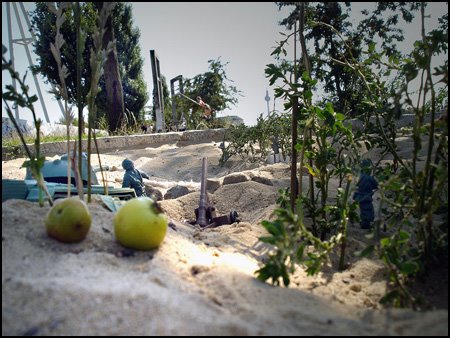
Of course, I can't resist quoting J.B. Jackson. On his time as an intelligence officer in World War II and how that experience had given him a heightened sense of environmental awareness, he writes: “the military landscape provided us with a spatial order dedicated to sudden and violent movement, a set of relationships based on total subordination and anonymity, and a sensory experience based on death and the premonition of death; it was the ugly caricature of a landscape. Nevertheless, it functioned, and even its horrors instructed us in what a good landscape, and a good social order, should be.”
In other words, to train better landscape architects, reinstitute the draft and send them off to boot camp. Embed BLA, MLA I, MLA II, and PhD candidates in combat missions, for in order to understand landscapes, one must experience how they “satisfy elementary needs,” how they “establish bonds between people, the bond of language, of manners, of the same kind of work and leisure, and how [they] should contain the kind of spatial organization which fosters such experiences and relations; spaces for coming together, to celebrate, spaces for solitude, spaces that never change and are always as memory depicted them.”
You might object, arguing 1) that you're a pacifist; 2) that you can probably acquire similar range of skills from somewhere else; and 3) that it all sounds very much like touchy-feely psychoanalytical drivel.
However, 1) landscape architecture is not a pacifist profession; 2) you can, but probably not in the very short amount of time available to you in college; and 3) the visceral, concrete quality of experience afforded by combat -- for instance, your best friend dies right in front of you, a bullet through his head, simply because someone had misinterpreted the topography, exposing the entire platoon to an ambush -- should translate into actual results, conditioning students to read landscape more critically and with keener perception.
So how about it?